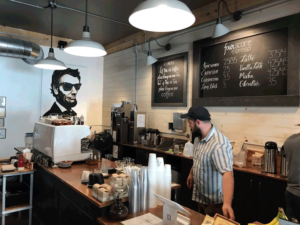
Laurie Baratti | (TNS) TravelPulse
Google Maps is introducing fresh updates aimed at enhancing the ease of finding travel inspiration and local recommendations at your destination. These updates will be visible to users in over 40 cities across the U.S. and Canada this week, with a global rollout on Android and iOS mobile platforms scheduled for later this month.
With these updates, users can explore curated lists of local recommendations from fellow users and reputable websites, tailor their own lists, and access valuable insights, streamlining vacation planning and ensuring a smooth on-the-go experience. To utilize the new features, simply search for a city in Google Maps and swipe up to discover curated lists of places from locals and trusted sources like Lonely Planet, The New York Times, and OpenTable.
And, when you’re away from home, deciding where to dine is always a priority. Now, whether you’re a traveler or simply seeking a trendy spot in town, you can rely on new restaurant lists curated by Google Maps. These lists highlight eateries that are garnering attention or receiving high ratings on Maps in real-time. Google has categorized restaurants into three distinct lists based on different criteria, creating indices for trending, top-rated, and hidden gem locations.
The Trending list is refreshed weekly to feature establishments that have recently surged in popularity on Maps, perfect for discovering the latest hotspots.
The Top list showcases establishments that have consistently received praise from the Maps community. Utilize this list to uncover longstanding favorites in any neighborhood.
The Gems list features establishments that are regarded as the best-kept secrets in an area, showcasing excellent restaurants that remain relatively unknown.
By creating Maps lists, you can categorize places you want to visit and places you’ve already been but may want to revisit. With the new list format, users can conveniently organize their selections for quick reference by arranging them in any preferred order. Simply move them up or down to customize their display. Users can also integrate content from their social media feeds, such as personal reviews of specific venues.
Likewise, to provide users with a comprehensive overview of each venue quickly, Google’s AI extracts essential insights from the Maps community. Upon searching for a location, users will encounter curated photos and reviews that capture what patrons appreciate about it. The AI feature can even assist in identifying specific dishes and presenting relevant information based on a restaurant’s menu.
Additionally, new design enhancements aim to refresh Google Maps’ appearance, featuring a streamlined home screen and updated pin colors to enhance the visibility of locations on the map.
AI for trip planning
Google has recently announced an update to its Search Generative Experience (SGE), which will empower users to craft travel itineraries and gather trip ideas using AI. This move positions Google in competition with other companies already leveraging generative AI to assist travelers in planning their trips, such as Mindtrip and Layla.
To generate travel recommendations, Google’s AI engine utilizes information from various internet sources, along with user-submitted photos, reviews, and other details about specific locations. Users can interact conversationally with the AI, requesting something like “plan a five-day trip to New York City focusing on entertainment” and receiving a sample itinerary featuring local restaurants, attractions, and points of interest. Once users have crafted their desired itinerary, they can export it to Gmail, Google Docs, or Maps.
Currently, this new capability is only accessible in the U.S. (in English) for those enrolled in Google’s Search Labs program, which invites users to experiment with early-stage Google Search features. The company has not disclosed whether or when this function will be more widely available. According to TechCrunch, Google is not only exploring new applications for generative AI but also collecting data on consumers’ travel purchasing intentions, which could support its broader advertising endeavors.























